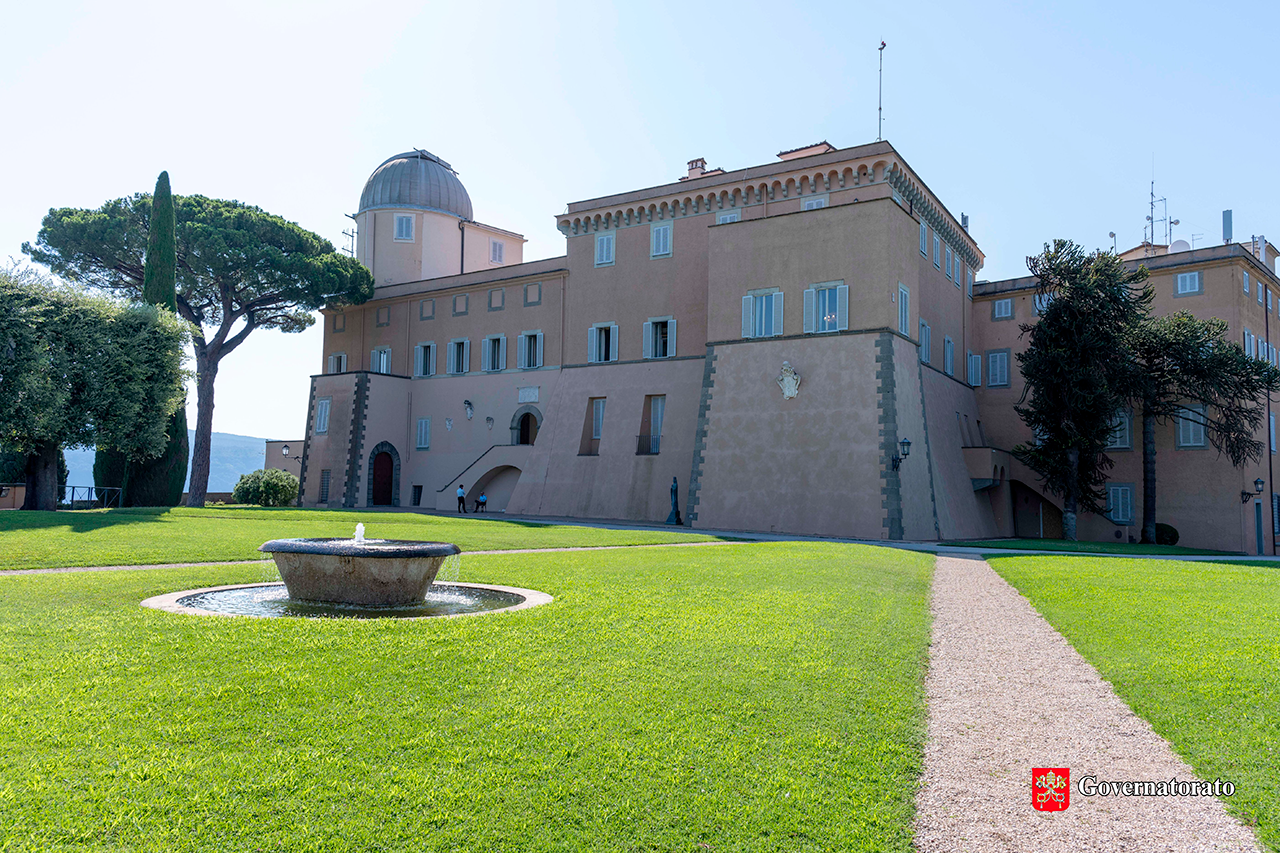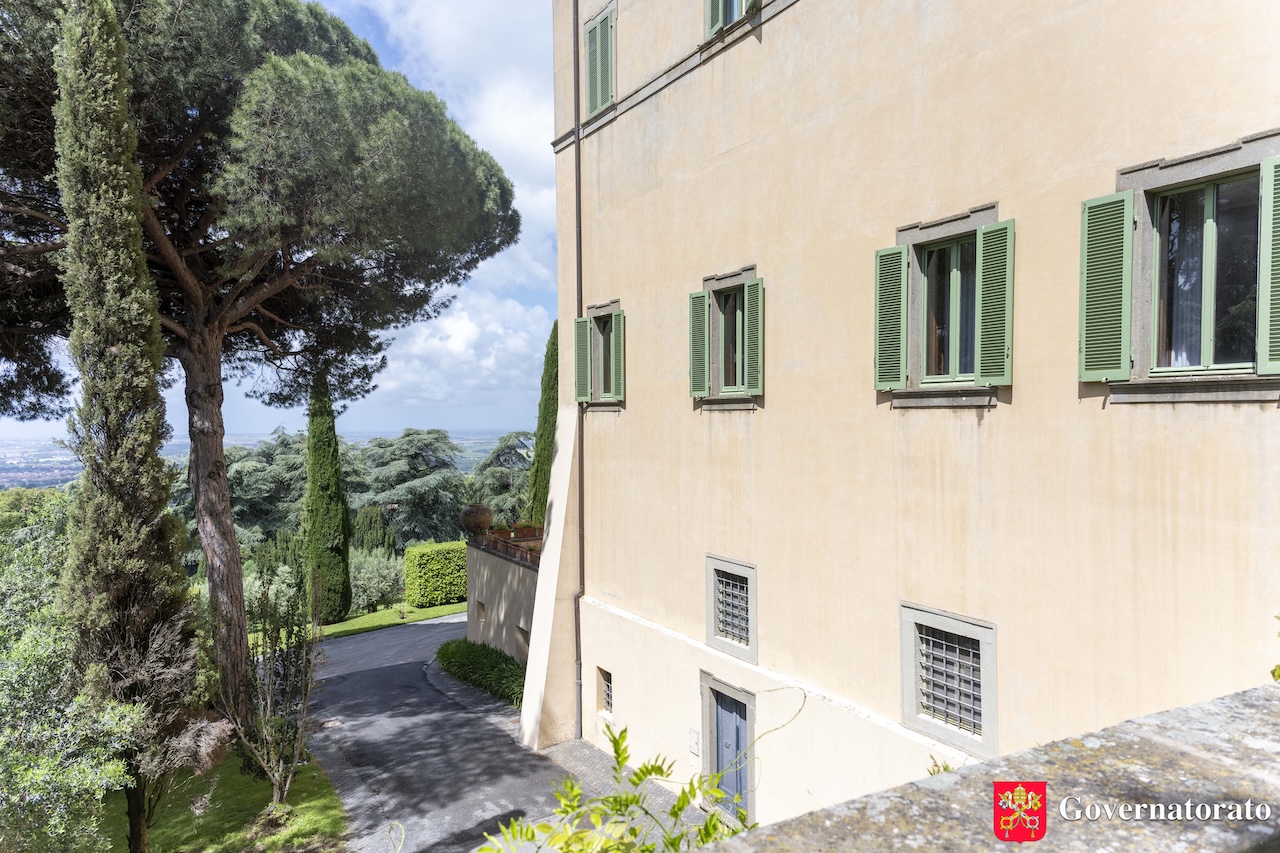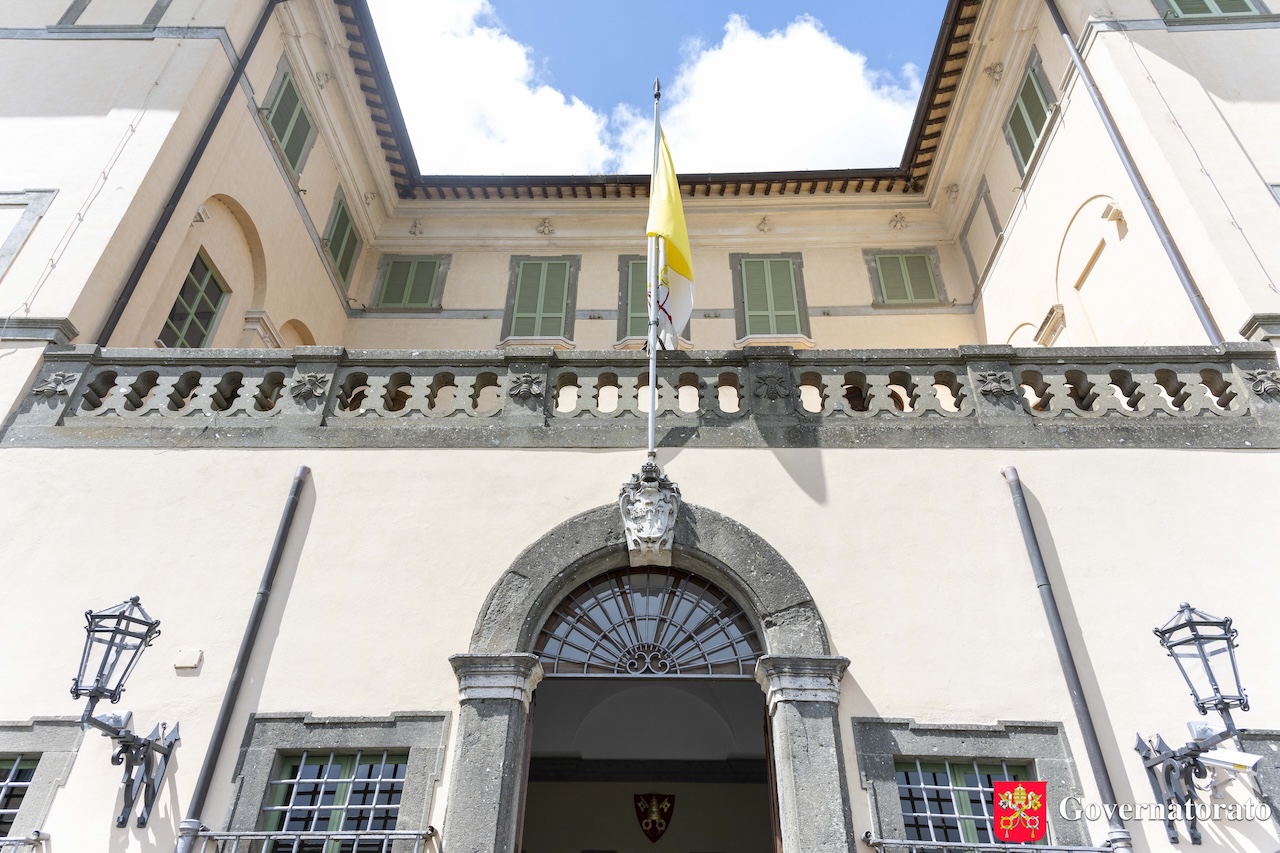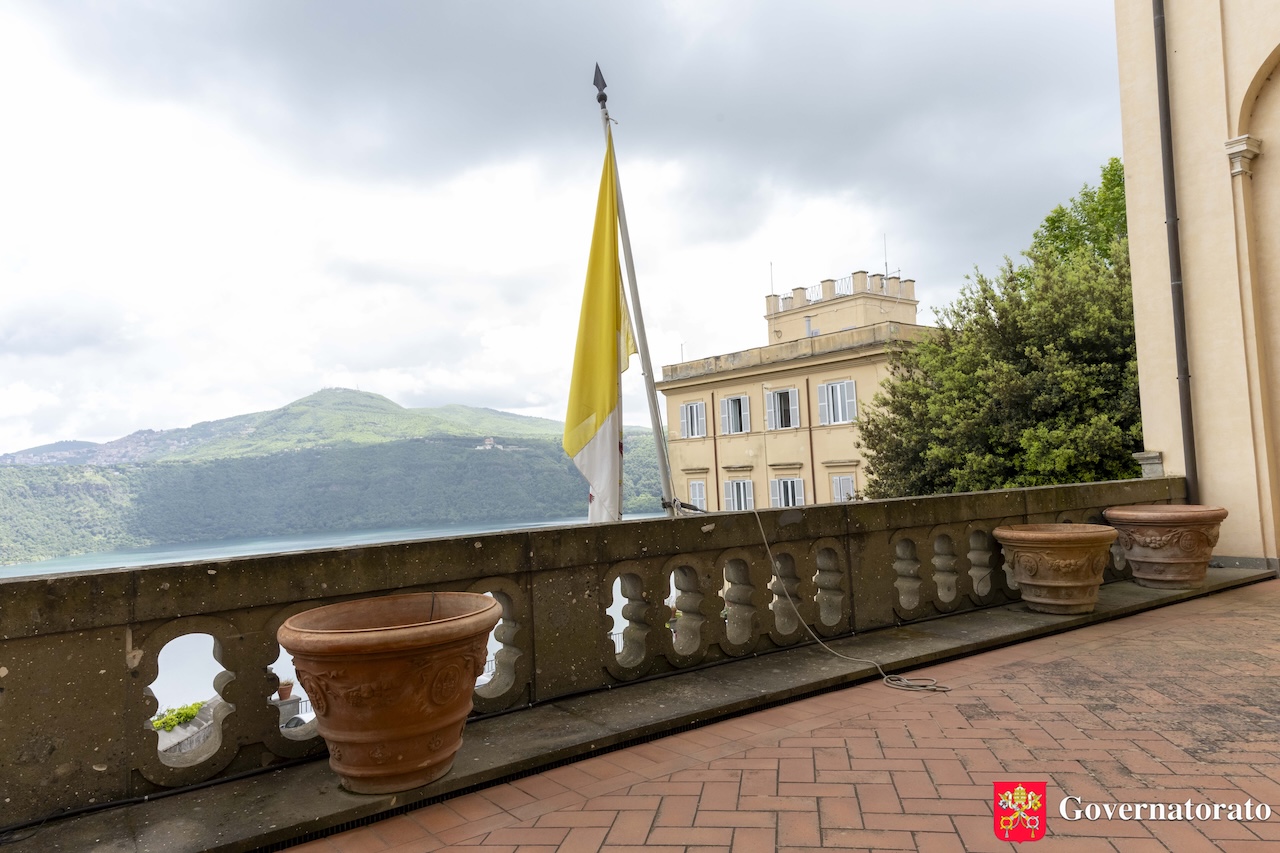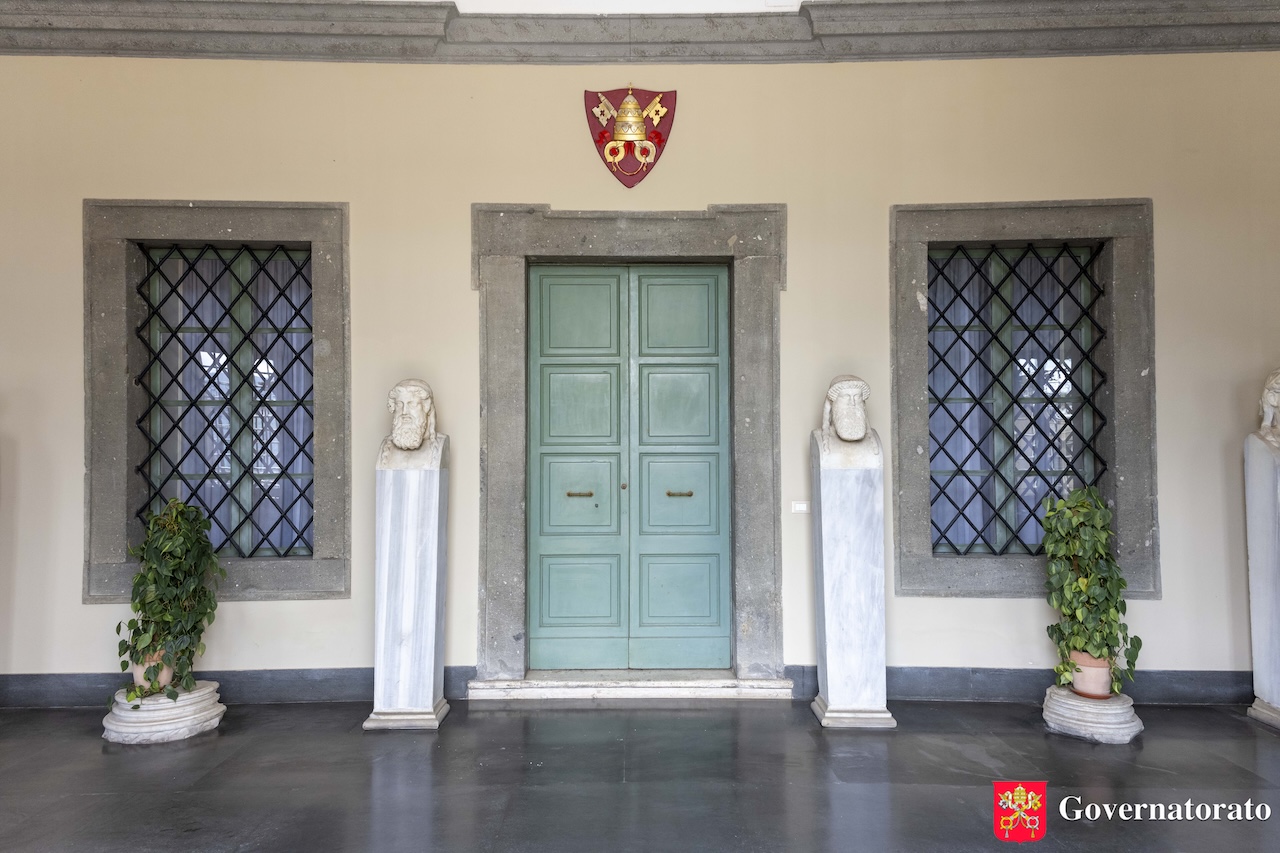Origins of the Villa Barberini in Castel Gandolfo
A few kilometers from Rome, the famous Villa Barberini, which for three centuries was owned by the Barberini family, came about from the acquisition and transformation of a previous villa located in what was once known as Mompecchio. Built by the Lombard architect Giacomo Mola (c. 1576-1650) commissioned by the owner Scipione Visconti of Milan of the Besnate branch, it still shows the coat of arms of its original owners, the Visconti family, that is, a snake sculpted in the stuccos that decorate one of the living rooms on the ground floor of the villa and in the external cornice facing the sea.
The original small building, never fully completed, was a simple parallelepiped form divided into three floors with the internal spaces marked by small rooms joined by a double-flight staircase and a small secondary snail-like staircase called “lumaca ovata”.
When Visconti died on 2 August 1630, in his will he ordered the sale of all his assets, including the villa, ultimately purchased in 1631 by Taddeo Barberini (1603-1647), nephew of Pope Urban VIII. Taddeo had married Anna Colonna in Castel Gandolfo, a union sealed by the marble coat of arms that currently adorns the large entrance portal to the villa. With Taddeo, the villa became a structure composed of two bodies of protruding lateral buildings, grafted onto the Visconti-era parallelepiped, on which also rested a transversal body placed in front of the pre-existing spiral staircase. Taddeo was also responsible for the arrangement of the ancient garden, characterized by rustic areas intended for olive groves, with an orchard and an area with espaliers of laurels, cypresses, oak trees and flower beds. Also built was what was called “passeggio”, a pathway made of peperino pavement that was laid on the cryptoporticus of Domitian’s ancient Roman villa.
The death of Pope Urban VIII on 29 July 1644 had the immediate consequence of the collapse of the Barberini family and the halting of any further works on the villa. Taddeo’s heir was Maffeo (1631-1685) who married Olimpia Giustiniani from whom Francesco (1662-1738) and Urbano (1664-1722) were born. Francesco junior, once he became cardinal, commissioned the construction in 1706 of the new gate facing the building, suitable for the transit of carriages.
After Francesco’s death, the villa remained in the possession of Princess Cornelia Costanza who, at a very young age, in 1728 married Giulio Cesare Sacchetti. It was probably she who commissioned the painter from Rimini, Giovan Francesco Buonamici (1692-1758) to paint the fresco depicting the Delivery of the Keys of Palestrina to Taddeo Barberini (an event dated 19 October 1630), which decorates a large vaulted room on the main floor.
